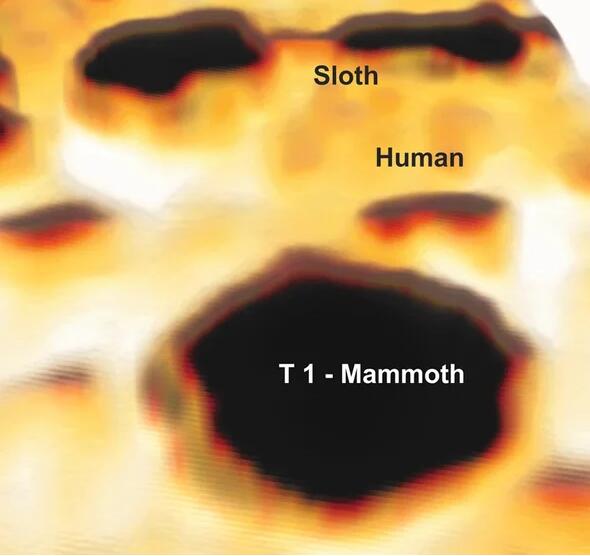(单词翻译:单击)
听力文本
This is Scientific American's 60-second Science, I'm Eliene Augenbraun.
Fossil footprints help tell us how ancient people lived. But such physical impressions are hard to find.
"You get all of these footprints from different species in the same time period interacting, and you can't see them all the time. And some of them, you can never see—with the eye, that is. But we can we can still detect them with geophysical sensors."
Cornell University archaeologist Thomas Urban. He and colleagues used ground-penetrating radar (GPR) to detect invisible traces of footsteps in White Sands National Monument in New Mexico. Their GPR device goes back and forth over an area in a grid pattern, which ultimately creates a 2-D radargram. The technique detects subtle differences in ground density.
Speaking about one set of otherwise imperceptible animal's footprints, he says:
"These were caused by compression of sediment beneath the animal's track. And they relate to the weight and momentum of the animal."

Twelve thousand years ago, the White Sands area was a large, muddy flat, which was covered with footprints from various species. Urban is excited about the stories so many footsteps suggest. For example, the researchers found no evidence of shoes or sandals. They did find human and animal tracks crossing each other—which suggests the prints were left during a hunt.
The findings are reported in the journal Scientific Reports.
"This sort of unique setting has recorded all of the daily movements of people. They are actually more than we even thought because there are always some that aren't visible."
These techniques could be applied to older sites all around the world, perhaps even to find dinosaur tracks that have been sitting quietly—waiting, at long last, to be found.
Thanks for listening for Scientific American's 60-second Science. I'm Eliene Augenbraun.
参考译文
这里是科学美国人――60秒科学系列,我是艾琳·奥根布劳恩。
化石脚印有助于让我们了解古代人的生活。但这这种物理印记很难找到。
“你获得了同一时期不同物种所有足迹的交互信息,但你不是总能看到足迹。有些足迹可能永远都看不到,我是说用肉眼看。但我们仍然可以用地球物理传感器探测到它们。”
康奈尔大学的考古学家托马斯·厄本说到。他和同事使用探地雷达(GPR)在新墨西哥州白沙国家公园探测了足迹的隐形痕迹。他们的探地雷达设备在一个网格区域来回移动,最终生成一张2D雷达图。这项技术可以检测出地面密度的细微差别。
谈到察觉不到的另外一组动物足迹时,他说:
“这些由动物足迹下沉积物压缩形成。它们与动物的体重和动量有关。”
1.2万年前,白沙地区是一片泥泞的平地,地面上布满了各种动物的脚印。厄本对这么多足迹所讲述的故事感到兴奋。例如,研究人员没有发现鞋子或凉鞋的迹象。他们确实发现了人类和动物的足迹相互重叠,这表明足迹是在狩猎过程中留下的。
这项研究发表在《科学报告》期刊上。
“这种独特的环境记录了人类所有的日常活动。这些足迹的确比我们想象的还要多,因为总有一些肉眼看不到的印记。”
这些技术可以应用于全球中地更古老的地点,甚至可以用来寻找那些静待最终被发现的恐龙的踪迹。
谢谢大家收听科学美国人——60秒科学。我是艾琳·奥根布劳恩。
译文为可可英语翻译,未经授权请勿转载!
重点讲解
重点讲解:
1. all the time 一直;
I got a new job this year where I am on the go all the time.
我今年找了份新工作,一直忙得不可开交。
2. back and forth 来回;往返;
He paced back and forth.
他来回踱步。
3. relate to 相关;有关联;
All these questions relate to philosophy.
这些问题都跟哲学有关。
4. at long last 终于;最后;到底;
Here, at long last, was the moment he had waited for.
他等待已久的时刻终于到来。


